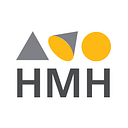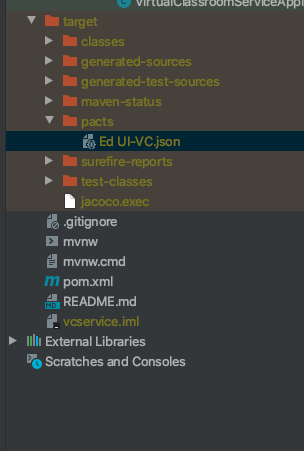RISE up the RAMP: The secret to teaching anything
This post is part of a learning sciences blog series debunking common myths in K–12 education. Read the version written for educators on Shaped here.
How do you get to Carnegie Hall? Practice, practice, practice. As a violist myself, this was a joke I heard often! I didn’t practice much, and I didn’t play that well. What if I had practiced for a total of 10,000 hours? I remember reading in Malcom Gladwell’s book Outliers, “10,000 hours is the magic number of greatness” and then mentally calculating whether I had done 10,000 hours of anything.
So, is the 10,000-hour rule true? At this stage in my life, I probably have done 10,000 hours of cooking, but no way am I ready for Top Chef. (I literally made some pumpkin waffles that had to go straight into the trash this past winter.) The 10,000-hour rule is a myth because it is not just any kind of practice that leads to mastery, but deliberate practice with feedback. Although most learners may not be practicing any particular task for 10,000 hours with us, we want learners to develop and build mastery every day, week, and month they are in our classrooms.
It’s rare that any of us aim to be superstar musicians or athletes, and few are born as savants or prodigies. Typically, K-12 students are expected to be well-rounded and succeed in ELA and STEM disciplines, plus participate in extracurricular activities. As a graduate student, my intellectual development professor David Henry Feldman had us journal while learning a new skill. From 35 years of teaching the course and assigning the 12-week project, he learned what variables helped students succeed. Time was important (one hour per week of instruction, plus 20 minutes per day of practice), but equally important requirements were a live instructor and a skill-based activity that included methods for students to learn in stages. Even in a remote learning environment, teachers can balance synchronous and asynchronous tools to provide instruction, enable deliberate practice, and provide feedback to deepen learning.
What the Research Says About Practice
Considering practice is the key action that takes us from novice to master, understanding research-based techniques to enhance our practice is key. “As soon as we learn something, we begin to forget it,” Yana Weinstein and Megan Sumeracki explain in their book Understanding How We Learn: A Visual Guide with Oliver Caviglioli.
Leveraging four of their suggested practice techniques will help anyone RISE through Retrieval practice, Interleaving, Spaced practice, and Elaboration. Then, complete the learning loop back to instruction with feedback — reflective information provided to the learner. Finally, the cycle restarts and we start RISE-ing again.
Practice Terms to Know
Retrieval Practice
Retrieval is the act of recalling what has been learned and is essential for creating durable memories. Retrieval best enhances retention when practiced early and often in a low-pressure context. Learners can practice retrieval by free writing, explaining, or drawing what they remember from a lesson; answering questions; or filling out a graphic organizer based on the content.
Interleaving
Interleaving involves switching up the types of retrieval and/or the order of the problems that learners solve when they practice. This is often done with math problems, vocabulary cards, or even historical events. Changing the order or type of activity increases the effort and may create more cues for memory.
Spaced Practice
Spacing out retrieval practice across multiple shorter sessions, days, or weeks is more effective than one long session for long-term retention because it requires more effortful processing.
Elaboration
Elaborative practice involves explaining and describing ideas, making connections between the material and learners’ own experiences. Elaborative interrogation takes this one step further, requiring learners to ask themselves questions about the how and why of what they learned to connect material to other information they have learned, according to this article.
Feedback
Feedback is information provided to learners about their current level of knowledge and what they can do to progress to the next level. It is an essential step in making formative assessment meaningful. Feedback only works if it is received and acted on by the learner, so both the content and the delivery of feedback matter, according to Fisher, Frey, and Hattie (2016).
Looking back at all the times we crammed for a test in high school or college, we probably now realize that cramming only worked in the short term. (Research shows that we start forgetting information soon after it is presented.) RISE practice also is more effective than rereading content for long-term retention because it requires effortful processing. In their book, Weinstein and Sumeracki bring up the emotional challenge of this — it’s harder to practice in a way that helps us remember the material better, which can make us feel frustrated. So let your students know that the struggle is worth it!
Retrieval reactivates newly formed neural nodes and their connections to existing knowledge in the brain, deepening the memory trace and making it more transferrable to other contexts, research shows — so it’s more than rote memorization. Retrieval also supports attention by making learning active, and it provides feedback to students and teachers about what was learned. Back to the emotional side of learning, rereading and highlighting feels more successful than retrieving, so as you give feedback, remind your students again that the pain is worth the gain.
What to Think About When Designing Lessons for Students
RAMP, the HMH Learning Science Pillars (Rigorous, Aligned, Motivating, and Personal), is a framework that can help us discuss ways that practice and feedback enable deep learning for our students.

Rigorous: In all forms of RISE practice, students are actively interacting with the information. Students also engage in critical thinking when provided with open-ended questions during retrieval practice and are taught how to elaborate on their answers.
Aligned: Feedback should focus students’ attention on main points to remember and a few relevant examples rather than including all possibly helpful information. Leverage retrieval activities as part of learning and interspersed with instruction, keeping the instruct-practice-feedback loop as small and tight as possible.
Motivating: Provide labels for student skill development and create meaningful milestones and goals together. This shared purpose-building can help them celebrate and take ownership of their learning. Recognizing their strengths and areas that they need to work on develops intrinsic motivation.
Personal: When it comes to practicing anything, having personal connections to the goals of learning is critical. It may be that it’s relevant to their interests, helps them build positive relationships with others, grounds them more deeply in their community, or fuels their curiosity for understanding other places and their cultures.
RAMP-Friendly Resource
With so much to keep in mind when designing practice, I wanted to highlight a few recipes for online or blended learning presented by instructional designer Leonard Houx. Short videos paired with quizzes can tightly pair instruction and immediate retrieval with feedback. Discussions in an online asynchronous forum or a synchronous small-group breakout room can enable elaborative retrieval as well as provide a venue for students to hear their peers’ ideas and connections. The review quiz (retrieval) triggered a day or two later (spaced) that automatically shuffles the questions (interleaved) can meet multiple practice goals.
If you don’t already have quizzing tools baked into your curriculum like the ones at HMH, here are some reviews by Common Sense Media. After you review students’ practice data, Houx suggests a personal note to provide encouragement and feedback with concrete examples to clear up misconceptions and reinforce main concepts.

The 10,000-Hour Rule, Debunked
The 10,000-hour rule seems to come up when we talk about expertise or being a superstar musician or sports player. In education, time is a precious resource so any practice opportunities we give our students should be chock full of research-based strategies that deepen learning. EdTech tools can make RISE practice much easier since they are more automatic, reuse material, and provide instant feedback. Because RISE practice may feel less rewarding, modeling and teaching students about why these strategies help them better remember what they have learned can help with motivation and a growth mindset. While in school, college, and beyond, RISE will help students RAMP up their learning for the rest of their lives.










